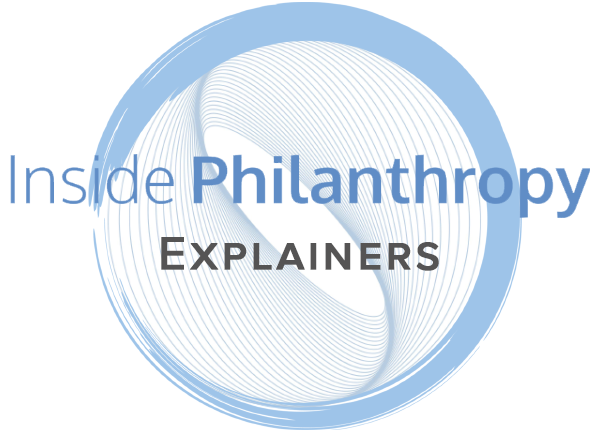IP Explainer: What Is General Operating Support?
/What’s the difference between a grant and a gift—and how do you get one? How do foundations work? What’s all this about 501(c)(3)s versus (c)(4)s? These are just a few of the questions that might be running through your mind if you’re new to the world of philanthropy and fundraising.
It doesn’t need to be so confusing.
Inside Philanthropy has produced a series of brief “explainers” to introduce you to the basics of philanthropy, defining key terms and elucidating important debates to help you find your way through all the jargon to become a more informed, more effective fundraiser.
Today, we explain general operating support and why it’s so important to grantees.
What is General Operating Support?
Support for an organization’s overall mission, rather than for a specific program or project.
Also known as unrestricted support or core support.
Can come from a gift or a grant.
Much touted by foundations, but seldom available or accessible to new or lesser-known grantees.
General operating support is an unrestricted grant or gift that can be used to cover any of a nonprofit’s expenses. The support is for the overall mission of the organization rather than for a particular program or project of the nonprofit. Also known as core or unrestricted support, a general operating grant can be used as the nonprofit sees fit.
Tell me more.
A lot of grants, and some gifts, can only be spent on a particular program or project. Say, a grant to fund research on a specific topic, or a gift from a donor for a particular exhibition at a nonprofit arts center. By contrast, general operating gifts or grants fund the nonprofit at the organizational level, rather than a specific nonprofit program or project.
General operating support can be used for things like overhead, staff salaries and facilities expenses, which a lot of program grants don’t cover. It can also be spread across several of the nonprofit’s programs. It can enable a nonprofit to jump on an exciting new opportunity to serve constituents. Or to respond quickly to an emergency affecting the community the nonprofit serves. The point is, general operating support can be used as the nonprofit sees fit.
General operating support provides much-needed stability and flexibility. Especially in the form of a multiyear grant, general operating support allows a nonprofit to plan for the future. It helps nonprofits get off the hamster wheel of fundraising their entire budget every year, which means they can spend more time and resources on their mission and programs.
In addition to being flexible, general operating support also covers the costs that program and project support too often leave out, like staff salaries, utilities, maintenance, supplies and all kinds of necessary overhead costs. For example, even when a project grant covers some staff costs (usually a percentage of indirect project costs), there are a lot of related expenses left unfunded. A grant to fund a nonprofit museum’s school-tours program might fund the salaries of the museum educators who give the tours. But who pays the salaries of the people who process those educators’ paychecks or create marketing materials to let schools know about the program? Maybe the project grant covers these related expenses—but very often, they don’t.
And pretty much every program funder wants to see a detailed program budget. But who is covering the salaries of the finance staff that’s doing the organization’s bookkeeping and preparing these budget reports? General operating support can cover those costs as well as program costs. The nonprofit has the flexibility to use the funding wherever it’s needed.
General operating support is a form of trust-based philanthropy because it reflects the grantmaker’s trust in the nonprofit. A foundation that gives general operating support is signaling: You, as the nonprofit staff focused on this issue and doing the work every day, know best how to spend your budget. That kind of trust can build a more balanced and transparent relationship between grantmaker and grantee.
While general operating support is much-touted as a best practice in philanthropic circles, it still represents only a fraction of overall giving. The Center for Effective Philanthropy reported in 2020 that in the decade prior to the COVID-19 pandemic, only 21% of grants were for general operating support. An even smaller percentage—12.4%—were both multiyear and general operating support.
You might also want to check out:
Debate: GOS vs Project Support
What is program or project support?









